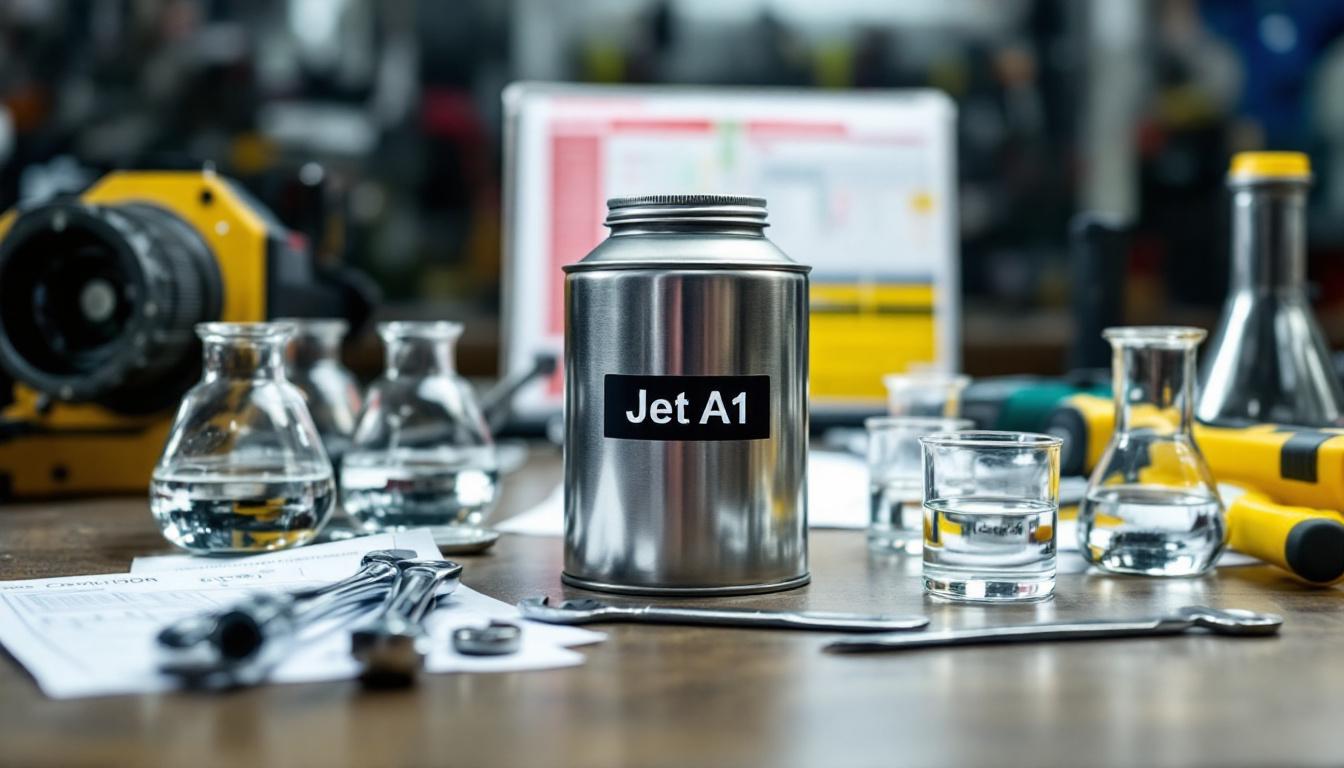
Jet A1 Fuel Conversion: Simplified Methods
At GLOBAL TERMINAL NETHERLANDS B.V, we understand the critical role Jet A1 fuel plays in aviation operations. Accurate fuel management is essential for safety, efficiency, and cost-effectiveness in the industry.
Jet A1 fuel conversion can be complex, but it doesn’t have to be. In this post, we’ll explore simplified methods to make the process more straightforward and reliable for aviation professionals.
What Makes Jet A1 Fuel Essential?
The Unique Properties of Jet A1
Jet A-1 is a kerosine grade of fuel suitable for most turbine engined aircraft. It has a flash point minimum of 38 degrees C (100°F) and a freeze point maximum. This kerosene-based fuel meets stringent industry standards, ensuring optimal performance and safety in flight operations. Its freezing point maintains fuel flow at high altitudes where temperatures drop significantly. With a high energy density, Jet A1 provides aircraft with the power needed for long-distance flights.
Critical Role in Aviation Operations
In the aviation industry, Jet A1 fuel represents a significant portion of operational costs. The International Air Transport Association (IATA) reports that jet fuel accounts for almost 30% of airlines’ operating expenses. This fact underscores the importance of efficient fuel management and accurate conversion practices.
Quality Control Challenges
Maintaining consistency in fuel quality across different suppliers and regions presents a primary challenge in Jet A1 fuel management. Variations in fuel properties can affect engine performance and fuel efficiency. To address this issue, companies implement rigorous quality control measures at storage facilities (such as those in Rotterdam, Houston, Singapore, Fujairah, and Antwerp).
Measurement and Conversion Hurdles
Accurate measurement and conversion of fuel quantities pose another significant challenge. Temperature fluctuations cause volume changes, which can lead to discrepancies in fuel calculations. This reality necessitates precise conversion methods (which we’ll explore in the following sections) for aviation professionals.
Sustainability Pressures
The aviation industry faces increasing pressure to reduce its carbon footprint. The International Civil Aviation Organization (ICAO) has set ambitious goals to improve fuel efficiency by 2% annually and achieve carbon-neutral growth from 2020 onwards. This push towards sustainability drives the industry to explore alternative fuels and more efficient fuel management practices.
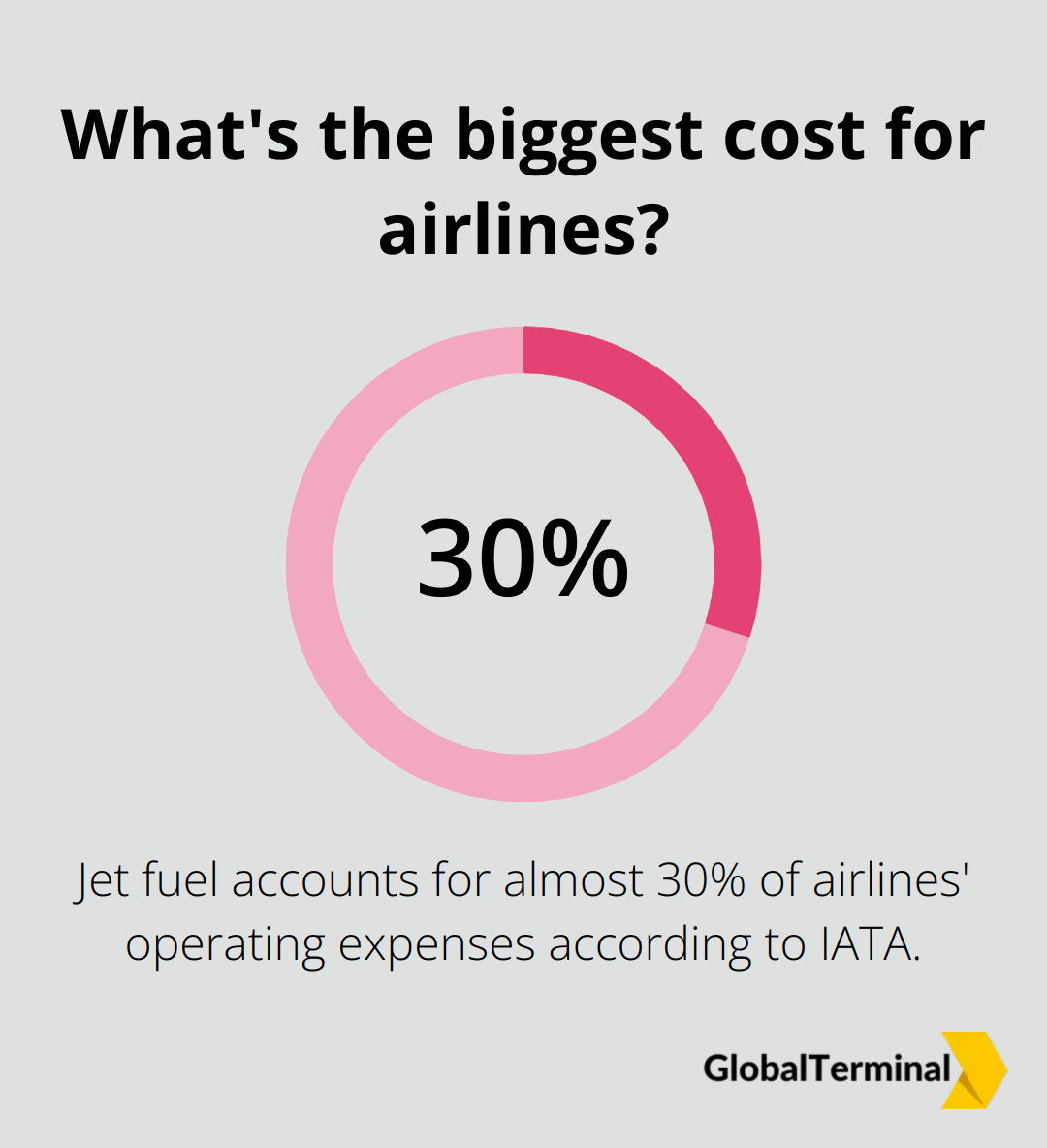
As we move forward, we’ll examine the common conversion methods for Jet A1 fuel, which play a vital role in addressing these challenges and ensuring efficient fuel management in the aviation sector.
How to Convert Jet A1 Fuel Accurately
Volume to Weight Conversion
Converting Jet A1 fuel from volume to weight is a fundamental skill in aviation fuel management. The standard density of Jet A1 at 15°C is 0.8 kg/L. However, this can vary slightly based on the specific batch of fuel. To convert litres to lbs Jet A1 fuel, multiply the volume by the density. For example, 1000 liters of Jet A1 typically weighs about 800 kg.
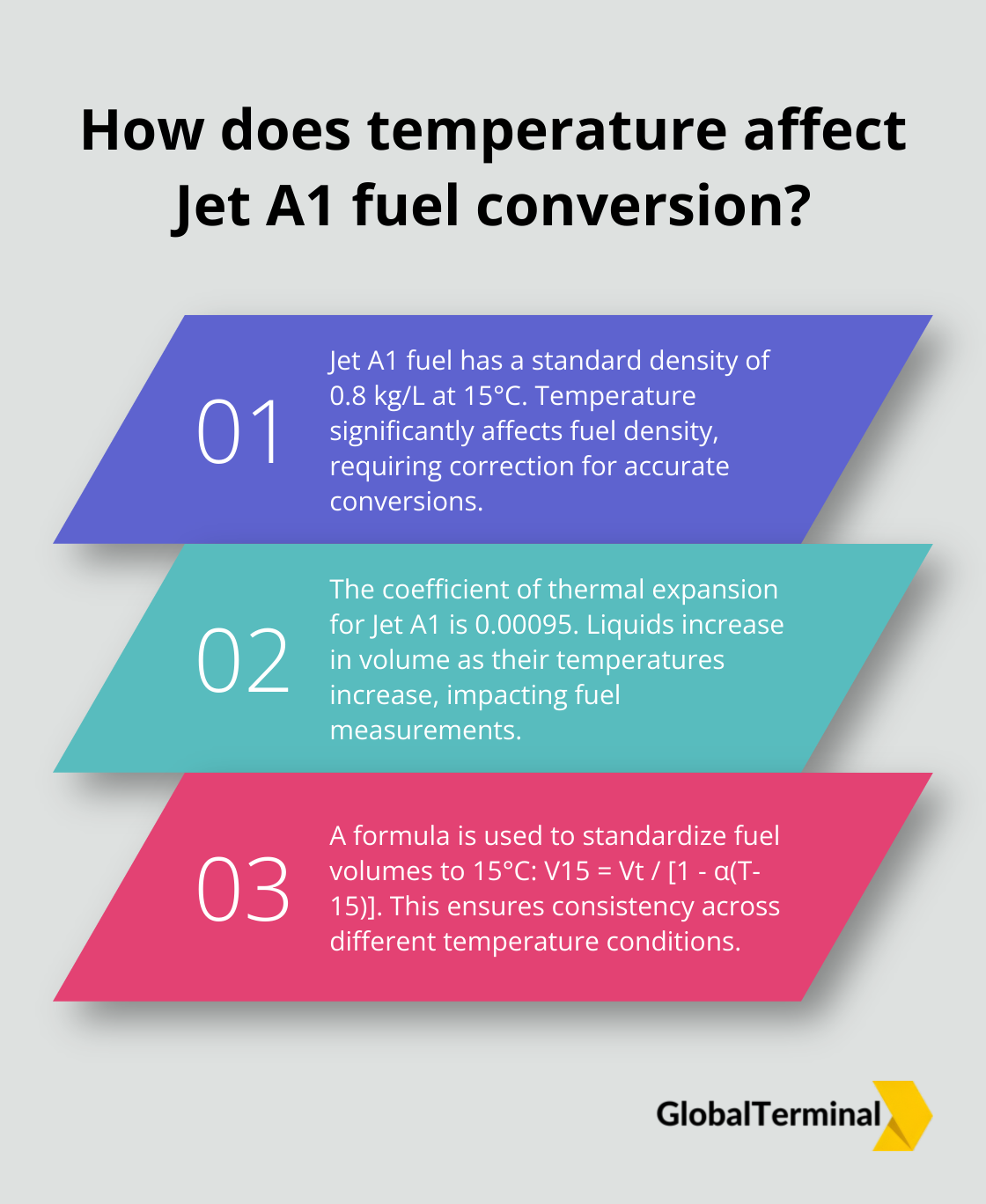
Temperature significantly affects fuel density. The American Petroleum Institute (API) provides tables for temperature correction, which are essential for accurate conversions across different environmental conditions.
Temperature Compensation Techniques
Temperature fluctuations can lead to significant discrepancies in fuel measurements. Liquids increase in volume as their temperatures increase. The coefficient of thermal expansion is a measure of the rate of volume increase with temperature.
To compensate for temperature variations, use the following formula:
V15 = Vt / [1 – α(T-15)]
Where:
V15 = Volume at 15°C
Vt = Volume at observed temperature
α = Coefficient of expansion (0.00095 for Jet A1)
T = Observed temperature in °C
This formula allows you to standardize fuel volumes to 15°C, ensuring consistency across different temperature conditions.
Density Adjustment Procedures
Fuel density can vary due to factors like temperature and specific gravity. The API gravity is an inverse measure used to determine the weight of petroleum liquids in comparison to water. To adjust for density variations:
- Measure the API gravity of the fuel at the observed temperature.
- Use API gravity tables to find the corresponding density at 15°C.
- Apply this density in your volume-to-weight conversions.
For enhanced accuracy, many aviation professionals use digital density meters. These devices provide real-time density measurements, allowing for more precise fuel calculations.
Advanced Conversion Tools
To streamline the conversion process, the aviation industry has developed various tools and technologies. Digital fuel gauges and automated conversion systems (often integrated into aircraft fuel management systems) provide real-time data on fuel quantity and density. These tools not only increase accuracy but also reduce the potential for human error in calculations.
Some advanced systems even incorporate predictive algorithms, which can account for factors such as altitude changes and temperature fluctuations during flight. This level of precision is particularly valuable for long-haul flights where fuel efficiency is paramount.
The implementation of these conversion methods and tools is essential for accurate fuel management. As we move forward, we’ll explore simplified conversion tools and techniques that can further enhance the efficiency of Jet A1 fuel management in aviation operations.
Streamlining Jet A1 Fuel Conversion
Digital Solutions for Fuel Conversion
The aviation industry has embraced digital technology to simplify fuel conversion processes. Mobile apps such as FuelCalc and AviationTools offer instant Jet A1 fuel conversions on-the-go. These apps account for temperature variations and density differences, providing accurate results in various units of measurement. The International Air Transport Association (IATA) recommends the use of such digital tools to minimize human error and increase efficiency in fuel calculations.
Standardized Conversion Tables
While digital solutions offer convenience, many aviation professionals still rely on standardized conversion tables. The Joint Inspection Group (JIG) publishes comprehensive tables for Jet A1 fuel conversions, which account for temperature and density variations. These tables serve as a reliable backup when digital tools are unavailable and are widely accepted in the industry.
Best Practices for Precise Conversions
Accurate fuel conversion plays a vital role in flight safety and operational efficiency. Here are some industry-proven best practices:
- Regular Calibration: All measurement equipment requires regular calibration. The American Society for Testing and Materials (ASTM) recommends calibration at least once every six months.
- Temperature Monitoring: Use accurate thermometers to measure fuel temperature. Even small temperature discrepancies can lead to significant volume differences in large fuel quantities.
- Density Checks: Perform regular density checks using hydrometers or digital density meters. The density of Jet A1 fuel typically ranges from 775 to 840 kg/m³ at 15°C.
- Cross-Verification: Always cross-verify calculations using multiple methods. This practice helps catch potential errors and ensures the highest level of accuracy.
- Training and Certification: Invest in regular training for fuel handlers and managers. Organizations like the International Air Transport Association (IATA) offer specialized courses in fuel management and handling.
Advanced Conversion Tools
The aviation industry has developed various tools and technologies to streamline the conversion process. Digital fuel gauges and automated conversion systems (often integrated into aircraft fuel management systems) provide real-time data on fuel quantity and density. These tools not only increase accuracy but also reduce the potential for human error in calculations.
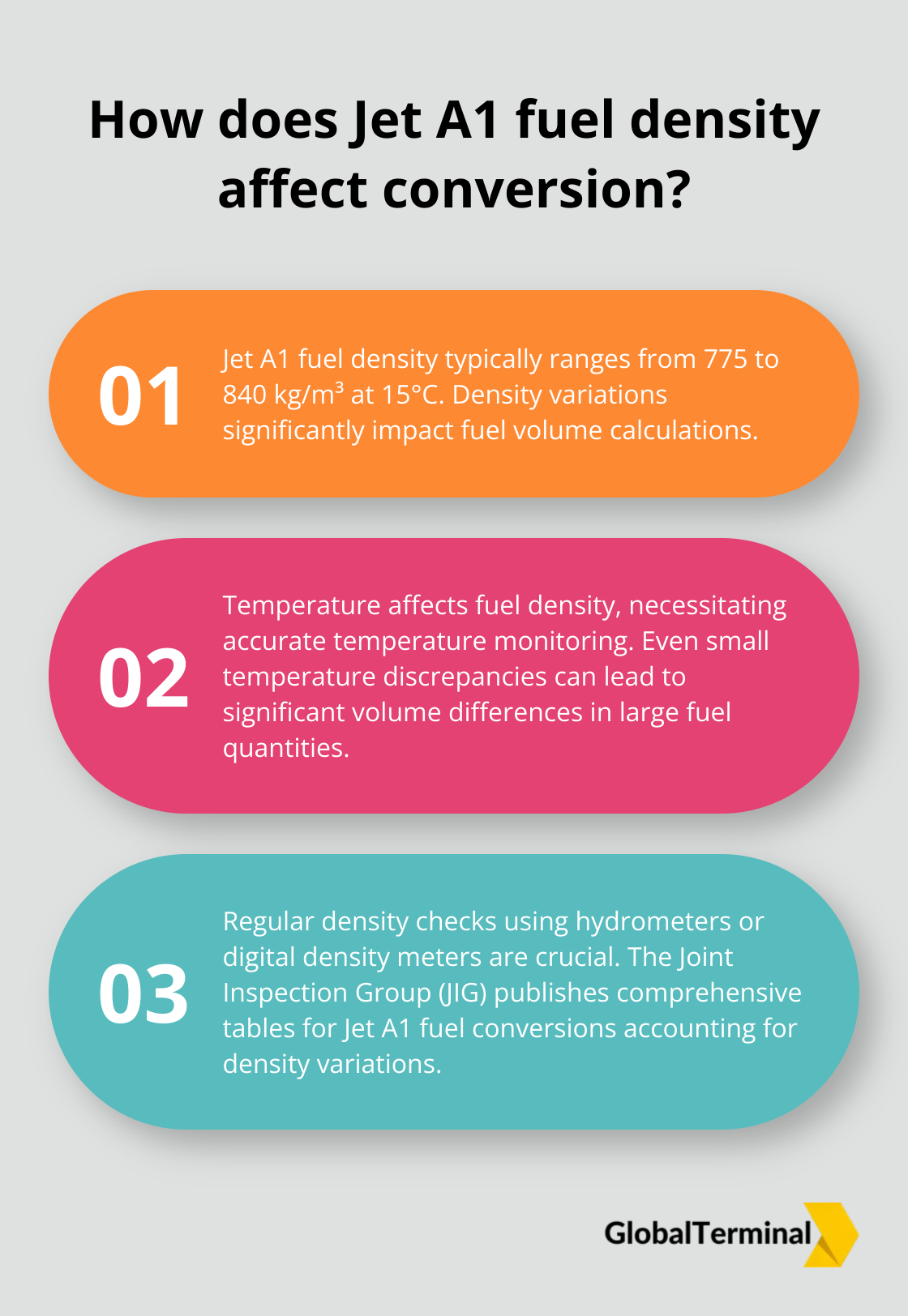
Some advanced systems incorporate predictive algorithms, which can account for factors such as altitude changes and temperature fluctuations during flight. This level of precision proves particularly valuable for long-haul flights where fuel efficiency is paramount.
Final Thoughts
Jet A1 fuel conversion plays a vital role in aviation operations, impacting safety, efficiency, and cost-effectiveness. We explored various methods for accurate fuel conversion, including volume-to-weight calculations, temperature compensation techniques, and density adjustments. These methods, along with digital tools and standardized tables, form the foundation of modern fuel management practices in the aviation industry.
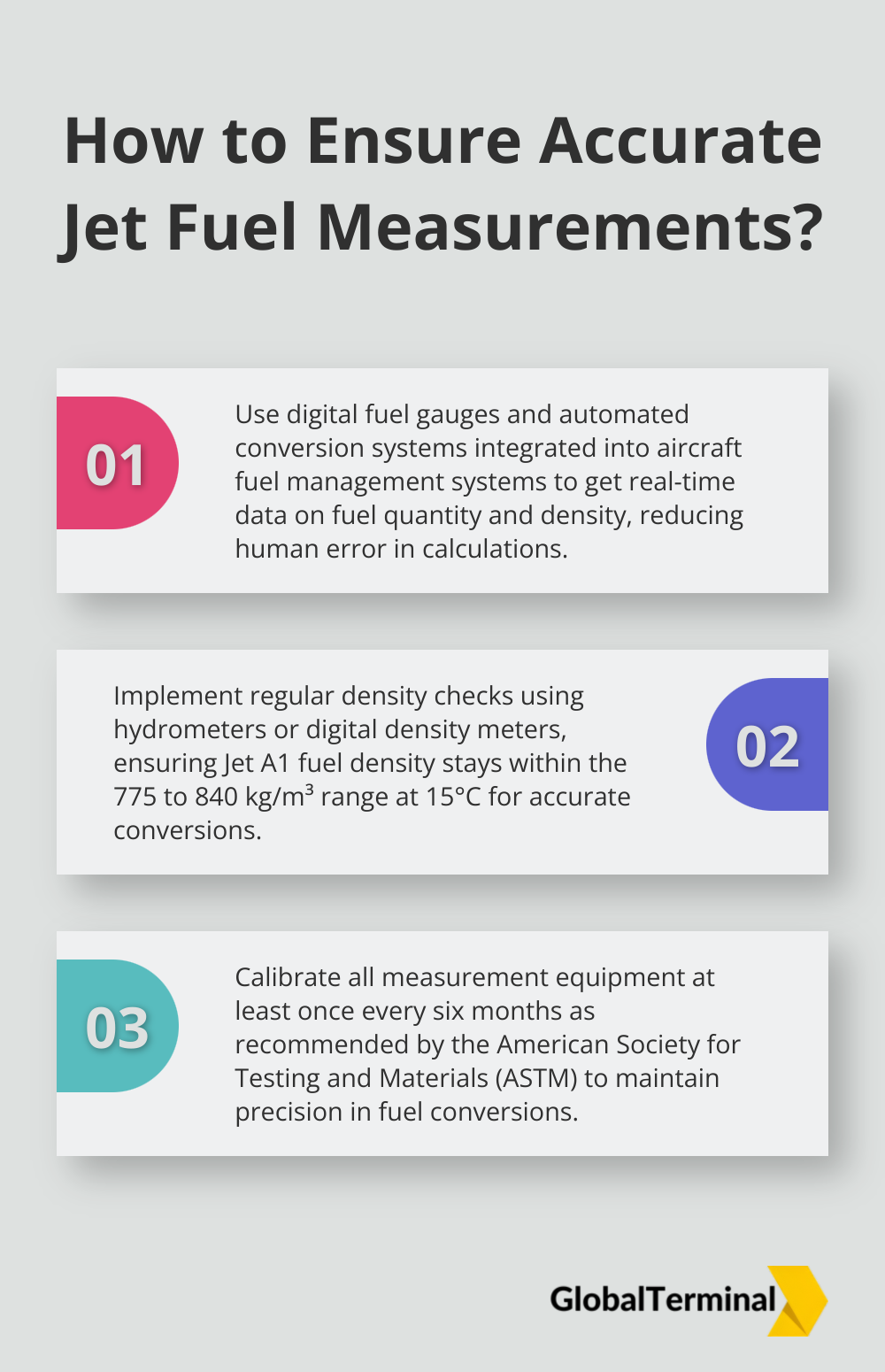
Precise fuel conversion calculations ensure aircraft carry the right amount of fuel, reducing the risk of incidents and optimizing consumption. This accuracy contributes to the industry’s efforts to reduce its carbon footprint by minimizing unnecessary fuel carriage. The integration of artificial intelligence and machine learning into fuel management systems promises to enhance prediction accuracy and operational efficiency in the future.
At GLOBAL TERMINAL NETHERLANDS B.V, we strive to stay at the forefront of these developments. Our facilities in key global ports (including Rotterdam, Houston, Singapore, Fujairah, and Antwerp) are equipped to handle the evolving needs of the aviation industry. We remain dedicated to providing high standards of service and supporting our clients in navigating the complexities of Jet A1 fuel management.

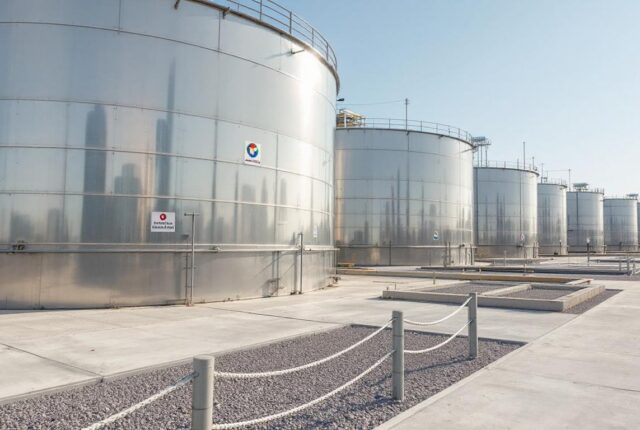

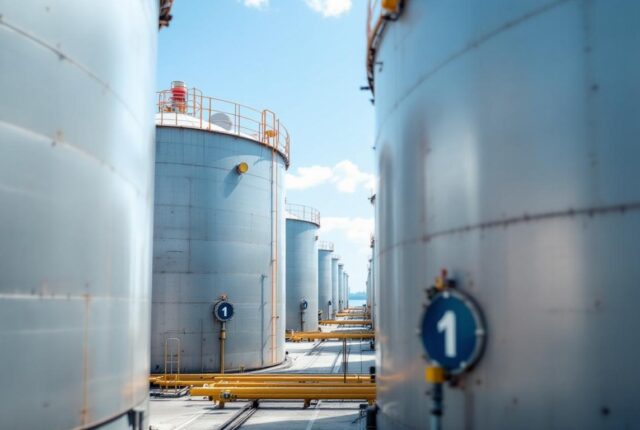

Leave a Reply